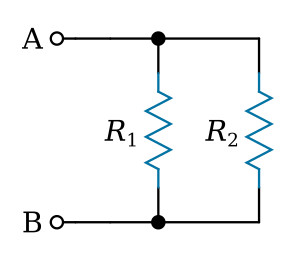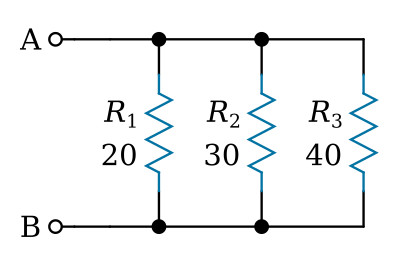Home > Textbooks > Basic Electronics > Resistors > Resistors in Parallel >
Resistors
Resistors in Parallel
The figure below shows two resistors connected in parallel between points A and B.

When resistors are connected in parallel, total resistance is always less than that of the smallest resistor being used. The total resistance of resistors in parallel is also referred to as equivalent resistance (Req). The terms total resistance and equivalent resistance are used interchangeably.
There are several methods used to determine the equivalent resistance of resistors in parallel. The best method for a given circuit depends on the number and value of the resistors. The general formula for resistors in parallel is:

Example:
Three resistors are connected in parallel as shown in the figure below.
The resistor values are:
R1 = 20 Ω, R2 = 30 Ω,
R3 = 40 Ω. What is the equivalent resistance?

Solution:

If identical resistors are being used, the following simple equation can be used:
![]()
where
Req is equivalent parallel resistance
R is ohmic value of one resistor
N is number of resistors
This equation is valid for any number of parallel resistors of equal value.
A convenient method for finding the equivalent, or total, resistance of two parallel resistors R1, R2 is by using the following formula:

This equation, called the product over the sum formula, is used so frequently it should be committed to memory.






